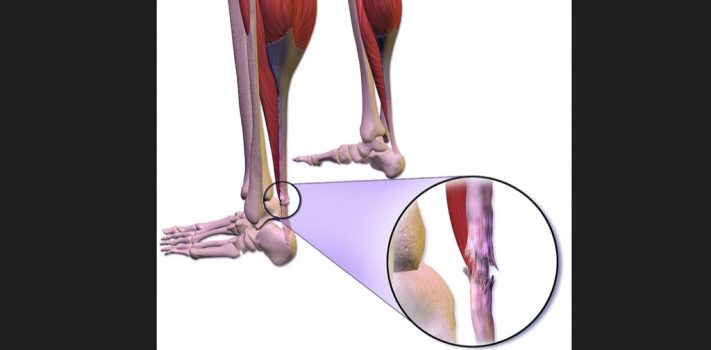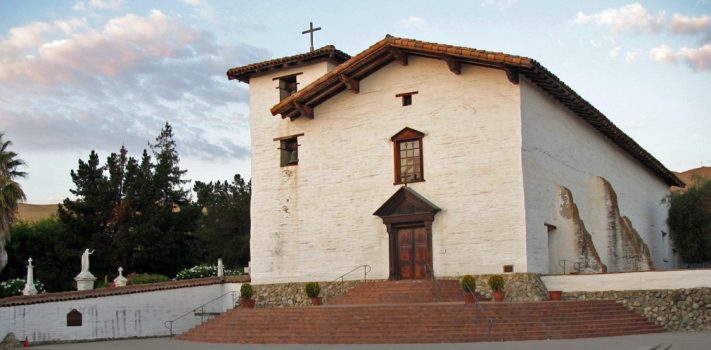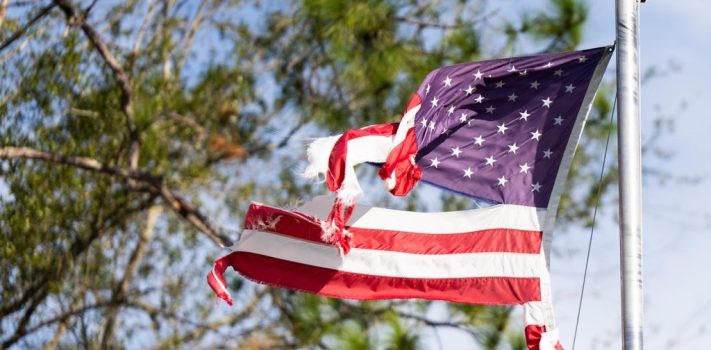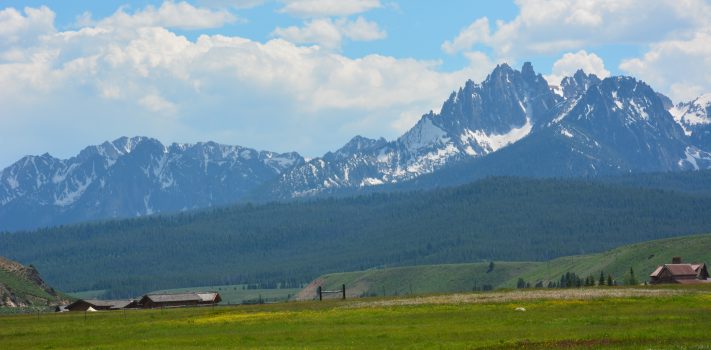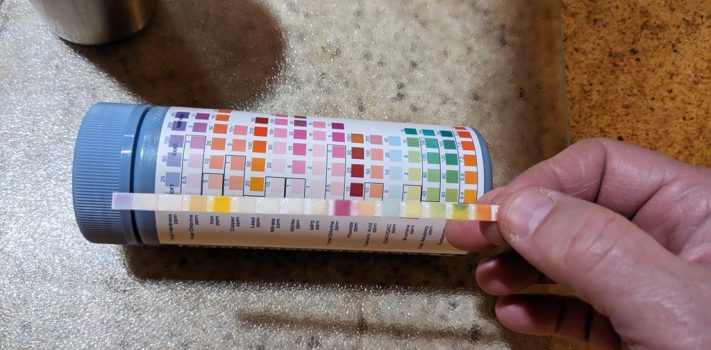“The more contracted that power is, the more easily it is destroyed. A country governed by a despot is an inverted cone.” – Samuel Johnson, as quoted in James Boswell’s ‘The Life of Samuel Johnson’ (1791) vol. 3, p. 283 (April 14, 1778)
- Ad Click Here --> Civil Defense ManualNOW BACK IN STOCK How to protect, you, your family, friends and neighborhood in coming times of civil unrest… and much more!
- Ad USA Berkey Water Filters - Start Drinking Purified Water Today!#1 Trusted Gravity Water Purification System! Start Drinking Purified Water now with a Berkey water filtration system. Find systems, replacement filters, parts and more here.
Preparedness Notes for Thursday — June 12, 2025
I just heard the news: Brian Wilson, Beach Boys Co-Founder, Dies at 82. His musical genius was obvious to anyone who has heard even just one of his compositions or complex arrangements. Here is just one example. Although I must say that some of the song lyrics that Wilson wrote were not edifying and sometimes promoted loose morals (for example: “I Get Around”), his musicianship was spectacular. Goodbye, Brian. Or should I say: Hushabye. – JWR
—
June 12, 1792: British explorer Captain George Vancouver landed on the site of what is now Vancouver, British Columbia.
—
On June 12, 1987, during a visit to the divided German city of Berlin, President Ronald Reagan publicly challenged Soviet leader Mikhail S. Gorbachev to “tear down this wall.”
—
SurvivalBlog Writing Contest
Today we present another entry for Round 119 of the SurvivalBlog non-fiction writing contest. The prizes for this round include:
First Prize:
- The photovoltaic power specialists at Quantum Harvest LLC are providing a store-wide 10% off coupon. Depending on the model chosen, this could be worth more than $2,000.
- A Gunsite Academy Three Day Course Certificate. This can be used for any of their one, two, or three-day course (a $1,095 value),
- A Peak Refuel “Wasatch Pack” variety of 60 servings of premium freeze-dried breakfasts and dinners in individual meal pouches — a whopping 21,970 calories, all made and packaged in the USA — courtesy of Ready Made Resources (a $350 value),
- American Gunsmithing Institute (AGI) is providing a $300 certificate good towards any of their DVD training courses. Their course catalog now includes their latest Survival Gunsmithing course.
- HSM Ammunition in Montana is providing a $350 gift certificate. The certificate can be used for any of their products.
Second Prize:
- A SIRT STIC AR-15/M4 Laser Training Package, courtesy of Next Level Training, that has a combined retail value of $679
- A $269 retail value survival-ready power package from Solar Power Lifestyle. This includes two Solar Power Lifestyle 25W Portable Solar Panels, plus a $150 gift card to use for any purchase at solarpowerlifestyle.com.
- Two 1,000-foot spools of full mil-spec U.S.-made 750 paracord (in-stock colors only) from TOUGHGRID.com (a $287 value).
- A transferable $150 FRN purchase credit from Elk Creek Company, toward the purchase of any pre-1899 antique gun. There is no paperwork required for delivery of pre-1899 guns into most states, making them the last bastion of gun purchasing privacy!
Third Prize:
- A Berkey Light water filter, courtesy of USA Berkey Filters (a $305 value),
- Two sets of The Civil Defense Manual, (in two volumes) — a $193 value — kindly donated by the author, Jack Lawson.
- A $200 credit from Military Surplus LLC that can be applied to purchase and/or shipping costs for any of their in-stock merchandise, including full mil-spec ammo cans, Rothco clothing and field gear, backpacks, optics, compact solar panels, first aid kits, and more.
- A transferable $150 FRN purchase credit from Elk Creek Company, toward the purchase of any pre-1899 antique gun.
—
More than $960,000 worth of prizes have been awarded since we started running this contest. Round 119 ends on July 31st, so get busy writing and e-mail us your entry. Remember that there is a 1,500-word minimum, and that articles on practical “how-to” skills for survival have an advantage in the judging. In 2023, we polled blog readers, asking for suggested article topics. Please refer to that poll if you haven’t yet chosen an article topic.
- Ad SIEGE belt: the original unmatched action belt. Proven in many unexpected situations on wearers' daily routines & travels. Engineered for extreme durability, performance, comfort & stunning looks. The only effective EDC you can take anywhere.SIEGE STOVES: prep for adventure/crisis with the ultimate ultra-compact survival stove. SIEGE BELTS: prized by those in the know. Blazing fast. Stunning appearance. USA-made.
- Ad Ready Made Resources, Trijicon Hunter Mk2$2000 off MSRP, Brand New in the case
Beyond Band Aids, by K.G.
Author’s Introductory Note: I am not a licensed medical professional, I am simply recounting an event that happened to me, research I have done on the subject and how it made me think differently about my own preparations. I hope you find this article interesting and informative, but please also do your own research.
Recently, I experienced my own personal Schumeresque event. I was competing in a sport I have done all my life when I felt something snap in the back of my heel. It happened as I took a hard step and I immediately knew something was wrong. I sat down and felt the back of my heel and knew I had ruptured my Achilles tendon. The event had an athletic trainer who came over to take a look but she quickly agreed with my assessment. She gave me some ice and helped me out of the building to the street while my wife went to pull up the car for the drive to urgent care where the Doctor confirmed my diagnosis.
The urgent care physician sent me home in a walking boot with instructions to call for an appointment with a surgeon the next day (this happened on the weekend). I was able to see the surgeon on Tuesday and he explained that while there are some non-surgical options, since I am very active and in good health, surgery would be the best option with the best chance of full recovery. They scheduled me for surgery on Friday. Until then, I needed to remain in the walking boot (including while sleeping) to protect my leg from further injury.Continue reading“Beyond Band Aids, by K.G.”
- Ad Survival RealtyFind your secure and sustainable home. The leading marketplace for rural, remote, and off-grid properties worldwide. Affordable ads. No commissions are charged!
- Ad California Legal Rifles & Pistols!WBT makes all popular rifles compliant for your restrictive state. Choose from a wide range of top brands made compliant for your state.
The Survivalist’s Odds ‘n Sods
SurvivalBlog presents another edition of The Survivalist’s Odds ‘n Sods. This column is a collection of news bits and pieces that are relevant to the modern survivalist and prepper from JWR. Our goal is to educate our readers, to help them to recognize emerging threats, and to be better prepared for both disasters and negative societal trends. You can’t mitigate a risk if you haven’t first identified a risk. In today’s column, we look at the ongoing anti-ICE protests and riots.
Southern California Gamefish Carrying Parasites
Most freshwater game fish in Southern California carry invasive parasites capable of infecting humans, study finds. The article’s introduction:
“More than 90% of popular freshwater game fish in Southern California contain an introduced parasite capable of infecting humans, according to a new study by researchers at UC San Diego’s Scripps Institution of Oceanography.
The parasites found in the study—two species of flatworms called trematodes—typically cause gastrointestinal problems, weight loss or lethargy when they infect humans. In some rare and severe cases, the parasites have caused strokes or heart attacks.
The findings, published in the Journal of Infectious Diseases, suggest that these parasites pose a previously unrecognized public health risk in the United States.”
A Third Chinese Researcher Arrested For Bioweapons
NBC News: U.S. says it has arrested another Chinese researcher accused of smuggling biological material.
L.A. Rioters Set Waymo Self-Driving Cars Ablaze
Rioters set Waymo self-driving cars on fire, company suspends downtown LA service.
- Ad USA Berkey Water Filters - Start Drinking Purified Water Today!#1 Trusted Gravity Water Purification System! Start Drinking Purified Water now with a Berkey water filtration system. Find systems, replacement filters, parts and more here.
- Ad Trekker Water Station 1Gal Per MinuteCall us if you have Questions 800-627-3809
The Editors’ Quote of the Day:
“And in those weaker glories spy
Some shadows of eternity.” – Henry Vaughan, ‘The Retreat’, from ‘Silex Scintillans’ (circa 1650)
- Ad STRATEGIC RELOCATION REALTYFOR SALE: Self-sustaining Rural Property situated meticulously in serene locales distant from densely populated sanctuary cities. Remember…HISTORY Favors the PREPARED!
- Ad Civil Defense ManualClick Here --> The Civil Defense Manual... The A to Z of survival. Looks what's in it... https://civildefensemanual.com/whats-in-the-civil-defense-manual/
Preparedness Notes for Wednesday — June 11, 2025
June 11, 1797: Spanish Mission San José was founded by Franciscan Padre Fermin Francisco de Lasuen at the Ohlone Village of Oroysom in Alta California (now Fremont, California)
—
And on June 11, 1947, WW II sugar rationing finally ended in the US. (It began May 28, 1942.)
—
SurvivalBlog Writing Contest
Today we present another entry for Round 119 of the SurvivalBlog non-fiction writing contest. The prizes for this round include:
First Prize:
- The photovoltaic power specialists at Quantum Harvest LLC are providing a store-wide 10% off coupon. Depending on the model chosen, this could be worth more than $2,000.
- A Gunsite Academy Three Day Course Certificate. This can be used for any of their one, two, or three-day course (a $1,095 value),
- A Peak Refuel “Wasatch Pack” variety of 60 servings of premium freeze-dried breakfasts and dinners in individual meal pouches — a whopping 21,970 calories, all made and packaged in the USA — courtesy of Ready Made Resources (a $350 value),
- American Gunsmithing Institute (AGI) is providing a $300 certificate good towards any of their DVD training courses. Their course catalog now includes their latest Survival Gunsmithing course.
- HSM Ammunition in Montana is providing a $350 gift certificate. The certificate can be used for any of their products.
Second Prize:
- A SIRT STIC AR-15/M4 Laser Training Package, courtesy of Next Level Training, that has a combined retail value of $679
- A $269 retail value survival-ready power package from Solar Power Lifestyle. This includes two Solar Power Lifestyle 25W Portable Solar Panels, plus a $150 gift card to use for any purchase at solarpowerlifestyle.com.
- Two 1,000-foot spools of full mil-spec U.S.-made 750 paracord (in-stock colors only) from TOUGHGRID.com (a $287 value).
- A transferable $150 FRN purchase credit from Elk Creek Company, toward the purchase of any pre-1899 antique gun. There is no paperwork required for delivery of pre-1899 guns into most states, making them the last bastion of gun purchasing privacy!
Third Prize:
- A Berkey Light water filter, courtesy of USA Berkey Filters (a $305 value),
- Two sets of The Civil Defense Manual, (in two volumes) — a $193 value — kindly donated by the author, Jack Lawson.
- A $200 credit from Military Surplus LLC that can be applied to purchase and/or shipping costs for any of their in-stock merchandise, including full mil-spec ammo cans, Rothco clothing and field gear, backpacks, optics, compact solar panels, first aid kits, and more.
- A transferable $150 FRN purchase credit from Elk Creek Company, toward the purchase of any pre-1899 antique gun.
—
More than $960,000 worth of prizes have been awarded since we started running this contest. Round 119 ends on July 31st, so get busy writing and e-mail us your entry. Remember that there is a 1,500-word minimum, and that articles on practical “how-to” skills for survival have an advantage in the judging. In 2023, we polled blog readers, asking for suggested article topics. Please refer to that poll if you haven’t yet chosen an article topic.
- Ad LifeSaver 20K JerryCan Water PurifierThe best water jerrycan you can buy on the market! Mention Survivalblog for a Free Filter ($130 Value)
- Add Your Link Here
Success and Loss: Hit Twice by the Same Hurricane – Part 2, by PrepperDoc
(Continued from Part 1. This concludes the article.)
Resolution and Improvement Plan
Finally, the clouds lifted, more sun arrived, and our power problems dissipated. From that point, we did fine waiting for the utility power to be returned. Eventually it was returned. But I had learned an important lesson: I started hunting for a better charger! Much later, I learned there was a chance that my gasoline “inverter generator” could provide steady enough power to pass for “utility power” and directly power my 48V inverter/charger systems with far more power — but that hasn’t been figured out (yet). What I did find were additional non-computerized 48V battery chargers on eBay, designed for golf cart lead acid batteries. Warning: it turns out they have their own “smarts” in the form of a relay that has to see 48V to begin charging — but I was able to easily rewire around the relay to get around that problem. That skill would turn out to be important, within weeks.
Unfortunately, the hurricane wasn’t done with us…Continue reading“Success and Loss: Hit Twice by the Same Hurricane – Part 2, by PrepperDoc”
SurvivalBlog Readers’ & Editors’ Snippets
Our weekly Snippets column is a collection of short items: responses to posted articles, practical self-sufficiency items, how-tos, lessons learned, tips and tricks, and news items — both from readers and from SurvivalBlog’s editors. Note that we may select some long e-mails for posting as separate letters.
—
A quite informative video: Off-Grid Internet + Emergency Comms? Starlink Mini Might Be The Piece Of Tech You’ve Been Missing. JWR’s Comments: For storage, I’d recommend using a big milsurp 20mm ammo can with an RF gasket retrofit, for some EMP/solar flare Faraday cage protection. I’m hopeful that the promised next generation of Starlink Mini units that will be manufactured to cater to the RV crowd will allow more efficient DC-to-DC operation. (Rather than the present-day inefficient DC-to-AC inversion and then back to DC kludginess.) All that you will need to worry about is providing a stable 12-volt DC power source. When that generation is released is when I plan to make the switch and retire our First Generation Starlink with the round antenna. Starlink: The Next Generation will be better suited to the off-grid power system at our ranch, and it will also give us the option of going mobile, in our RV/bugout vehicle. (Even folks like us, who live at our retreat year-round, need to have a bugout plan. We had to evacuate our ranch for two weeks a decade ago, because of some local forest fires. As serious preppers, we see the need to have contingency planning. We never know when we might have to evacuate again, for whatever reason.) – JWR
o o o
Carney says Canada in talks to join Trump’s Golden Dome defence system.
o o o
Outdoor Life: The Best Solar Chargers of 2025, Tested and Reviewed.
The Editors’ Quote of the Day:
“Rulers have no authority from God to do mischief…As soon as the prince sets himself up above the law, he loses the king in the tyrant. He does to all intents and purpose unking himself…and in such cases has no more right to be obeyed than any inferior officer who acts beyond his commission.” – Jonathan Mayhew (1720-1766), ‘A Discourse Concerning Unlimited Submission and Non-Resistance to the Higher Powers’, January 30, 1750
Preparedness Notes for Tuesday — June 10, 2025
On June 10, 1190, during the Third Crusade, Holy Roman Emperor Frederick I Barbarossa drowned while crossing the Saleph River (modern Turkey), while leading an army to Jerusalem.
—
On June 10, 1967, the Six-Day War ended as Israel and Syria agreed to observe a United Nations-mediated cease-fire.
—
SurvivalBlog Writing Contest
Today we present another entry for Round 119 of the SurvivalBlog non-fiction writing contest. The prizes for this round include:
First Prize:
- The photovoltaic power specialists at Quantum Harvest LLC are providing a store-wide 10% off coupon. Depending on the model chosen, this could be worth more than $2,000.
- A Gunsite Academy Three Day Course Certificate. This can be used for any of their one, two, or three-day course (a $1,095 value),
- A Peak Refuel “Wasatch Pack” variety of 60 servings of premium freeze-dried breakfasts and dinners in individual meal pouches — a whopping 21,970 calories, all made and packaged in the USA — courtesy of Ready Made Resources (a $350 value),
- American Gunsmithing Institute (AGI) is providing a $300 certificate good towards any of their DVD training courses. Their course catalog now includes their latest Survival Gunsmithing course.
- HSM Ammunition in Montana is providing a $350 gift certificate. The certificate can be used for any of their products.
Second Prize:
- A SIRT STIC AR-15/M4 Laser Training Package, courtesy of Next Level Training, that has a combined retail value of $679
- A $269 retail value survival-ready power package from Solar Power Lifestyle. This includes two Solar Power Lifestyle 25W Portable Solar Panels, plus a $150 gift card to use for any purchase at solarpowerlifestyle.com.
- Two 1,000-foot spools of full mil-spec U.S.-made 750 paracord (in-stock colors only) from TOUGHGRID.com (a $287 value).
- A transferable $150 FRN purchase credit from Elk Creek Company, toward the purchase of any pre-1899 antique gun. There is no paperwork required for delivery of pre-1899 guns into most states, making them the last bastion of gun purchasing privacy!
Third Prize:
- A Berkey Light water filter, courtesy of USA Berkey Filters (a $305 value),
- Two sets of The Civil Defense Manual, (in two volumes) — a $193 value — kindly donated by the author, Jack Lawson.
- A $200 credit from Military Surplus LLC that can be applied to purchase and/or shipping costs for any of their in-stock merchandise, including full mil-spec ammo cans, Rothco clothing and field gear, backpacks, optics, compact solar panels, first aid kits, and more.
- A transferable $150 FRN purchase credit from Elk Creek Company, toward the purchase of any pre-1899 antique gun.
—
More than $960,000 worth of prizes have been awarded since we started running this contest. Round 119 ends on July 31st, so get busy writing and e-mail us your entry. Remember that there is a 1,500-word minimum, and that articles on practical “how-to” skills for survival have an advantage in the judging. In 2023, we polled blog readers, asking for suggested article topics. Please refer to that poll if you haven’t yet chosen an article topic.
Success and Loss: Hit Twice by the Same Hurricane – Part 1, by PrepperDoc
Intro Note: In the interest of operational security, some details are missing or slightly altered, without obscuring the learning points we experienced.
The Hurricane’s First Approach
Our family is very familiar with southeastern USA hurricanes from living in a “hurricane state” for many years. Somewhat inland, we generally have high winds but not significant structural damage. Usually, there are many, many trees/limbs down, causing havoc with roads and power systems.
As usual, the US Weather Service and the news media hyped Hurricane Helene to the max, threatening the usual utter destruction. We have learned to look at the National Weather Service maps and data ourselves. It looked like it could be bad, but the chances weren’t that high. (Normally, the predictions can change drastically in the final 24 hours before arrival.) Our local volunteer amateur radio group was alerted by the authorities, and we mustered sufficient volunteers to staff the required shelters, etc., including our county’s central control point, for the required length of time. This is a testament to our training and our dedicated volunteers — no one wants to leave their family when a big storm is approaching, but someone has to, in order to serve the community!Continue reading“Success and Loss: Hit Twice by the Same Hurricane – Part 1, by PrepperDoc”
SurvivalBlog’s News From The American Redoubt
This weekly column features news stories and event announcements from around the American Redoubt region. (Idaho, Montana, eastern Oregon, eastern Washington, and Wyoming.) Much of the region is also more commonly known as The Inland Northwest. We also mention companies located in the American Redoubt region that are of interest to preppers and survivalists. Today, news about a recent swarm of earthquakes near Stanley, Idaho. (See the Idaho section. The photo above was taken by Avalanche Lily, just outside of Stanley.)
Idaho
Stanley earthquake swarm brings more than 100 quakes, and it’s not over.
o o o
Small plane crashes in field south of Kooskia, Idaho.
o o o
An interesting bush plane video: Hailstorm Finally Goes Airplane Camping – Idaho Backcountry Trip.
Continue reading“SurvivalBlog’s News From The American Redoubt”
The Editors’ Quote of the Day:
“Whenever the people are well informed, they can be trusted with their own government; that whenever things get so far wrong as to attract their notice, they may be relied on to set them to rights.” – Thomas Jefferson, 1788
Preparedness Notes for Monday — June 9, 2025
On June 9, 1732, a royal charter for Georgia was granted to British military officer and philanthropist James Oglethorpe.
—
Today is the birthday of Jean Alexandre Francois LeMat (1824–1883). He is best known for the percussion cap revolver that bears his name. This clever revolver design has a cylinder that rotates around a 20-gauge shotgun barrel.
—
On June 9, 1940 Norway surrendered to the invading German army, during World War II. The citizenry was then quickly disarmed by the Nazis, so resistance was limited. (The invaders had access to the Norwegian police gun registration lists.) To limit reprisals by the Germans, King Hakkon the 7th also ordered that only Norwegian troops operating from offshore should overtly resist the Nazis. The “H7” logo became the ubiquitous symbol of resistance in occupied Norway.
—
Between now and early July, please keep the pressure on your state’s two U.S. Senators with at least two phone calls and an e-mail each week, insisting that they vote in favor of both the Hearing Protection Act (HPA) and the SHORT Act, as part of the Continuing Resolution budget bill. Please phone the Capitol Switchboard: (202) 224-3121. The HPA bill — already passed in the House — will remove suppressors from the National Firearms Act. Urge your Senator to include both Section 2 and Section 3 of the HPA. The SHORT Act will remove the SBR and SBS categories from the National Firearms Act. Please keep calling and e-mailing your state’s U.S. Senators! Please mark your calendar with reminders to make those calls. Thanks! – JWR
—
A Reminder: We are running a two-week-long sale on all of the pre-1899 Mauser rifles in our inventory at Elk Creek Company. There is no paperwork required to order these, in most States. They are mailed right to your door or your P.O. Box address. The sale ends on Monday, June 16th, so order soon. Take a look!
—
Today’s feature piece is a review written by SurvivalBlog Field Gear Editor Tom Christianson.
Liberty Gold Water Test Kit, by Thomas Christianson
Testing for lead, free chlorine, total alkalinity, MPS, iron, nitrite, pH, bromine, fluoride, total chlorine, hardness, cyanuric acid, copper, nitrate, QUAT/QAC, carbonate and coliform/e. Coli bacteria, the Liberty Gold Standard Complete Water Test Kit gives a pretty good overview of the quality of a water source using a simple testing process.
Costing $27.99 at the time of this writing at the Liberty Gold Standard website, the kit contains 140 test strips and three bacteria culture kits.Continue reading“Liberty Gold Water Test Kit, by Thomas Christianson”



